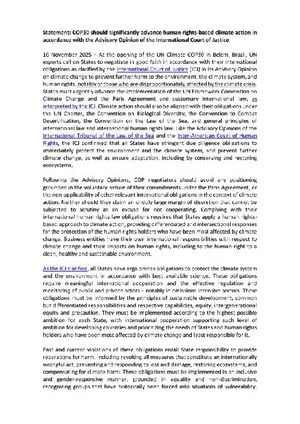On October 15, 2025, Vietnam’s Ministry of Home Affairs made headlines by formally responding to a proposal from Quang Ngai province voters, calling for the addition of a Deputy Director to the local public administrative service center and granting leadership more authority to authenticate documents. This move, reported by Dân trí, is not just about staffing—it’s a snapshot of a much broader transformation in the country’s approach to public governance, one that’s increasingly shaped by two-way feedback, transparency, and digital participation.
According to the Ministry, the proposal—channeled through the National Assembly’s Committee for People’s Aspirations and Oversight—sought to supplement one Deputy Director at grassroots administrative service transaction points. It also advocated for empowering the center’s leadership to sign off on document authentications, a routine but vital function for citizens. In response, the Ministry of Home Affairs issued Official Letter No. 8195/BNV-TCBC, reporting to Standing Deputy Prime Minister Nguyen Hoa Binh on staffing orientations for deputy professional departments under commune-level People’s Committees.
But the story doesn’t end with bureaucratic reshuffling. The Ministry also submitted a draft resolution to the Government, aiming to regulate the number of deputy positions at these professional departments and at equivalent administrative service centers. The draft, if enacted, would see each commune-level administrative service center staffed with an average of two deputy positions. The new leadership structure would include a Director (who also serves as Deputy Chairman of the commune-level People’s Committee) and a Deputy Director equivalent to a department head. This, the Ministry explained, would provide a legal and practical foundation for localities—including Quang Ngai—to proactively adjust their staffing and ensure effective two-level local government operations.
Crucially, the Ministry of Justice weighed in with Official Letter No. 4158/BTP-BTTP, offering guidance on authorizing commune-level People’s Committee leaders to sign document authentications. The guidance allows chairpersons to delegate these tasks to heads of specialized agencies, administrative organizations, or civil servants, as outlined in Decree No. 23/2015/ND-CP and Decree No. 07/2025/ND-CP. This flexibility is designed to streamline administrative procedures, reduce bottlenecks, and respond to the needs of citizens more efficiently.
Why does this matter beyond Quang Ngai or the particulars of staffing? As highlighted in a recent analysis by Dr. Lưu Đình Vinh and Ms. Nguyễn Thị Thanh Bình, published on October 16, 2025, the heart of modern governance in Vietnam is rapidly shifting toward a model that values two-way policy feedback. According to Pháp lý, this process is more than just listening; it’s about the State actively receiving, analyzing, and integrating information from multiple stakeholders—citizens, civil society organizations, businesses, and interest groups. The end goal? Policies that are not only practical but also legitimate, trusted, and responsive to real-world needs.
In the past, policy in Vietnam typically flowed one way: from State to society. Now, thanks to globalization and digital technology, there’s a growing demand for policies that are transparent, accountable, and based on real data. Social networks and digital platforms have opened up new channels for feedback, transforming what was once a top-down process into a dynamic, interactive network. As the Pháp lý article notes, “The relationship between the State and society has shifted from a one-way direction to a continuously interactive network, where information, feedback, and accountability are the core pillars.”
Vietnam’s legal framework has evolved to support this shift. Laws such as the Law on Promulgation of Legal Documents (2015), the Law on Local Government Organization (2015, amended), and the Law on Access to Information (2016) all encourage public participation and require State agencies to publish data, making it easier for citizens to provide feedback and for policymakers to adjust accordingly. These mechanisms are not just theoretical—they’re being put to the test in real time, as seen in the Ministry of Home Affairs’ response to Quang Ngai’s proposal.
But building a responsive government is no small feat. As the Pháp lý article points out, there are significant challenges. Legal frameworks for feedback are often fragmented or lack detailed guidance, making it hard for agencies to systematically collect, process, and use feedback. Many government officials still lack the training to analyze the vast and varied data that comes in from multiple sources, especially as digital participation increases. And on the other side, citizens and civil society groups sometimes lack the skills or confidence to provide constructive, actionable feedback—often because they’re unsure if their voices will be heard or make a difference.
Take Ho Chi Minh City as a case in point. Despite being the country’s economic powerhouse and boasting a highly educated public workforce—over 112,000 civil servants and public employees, more than half of whom are young and tech-savvy—the city still struggles to process and integrate feedback from its residents. Public consultations sometimes devolve into venting sessions rather than constructive dialogue, and the sheer volume of comments on social media can overwhelm officials tasked with sifting through them for actionable insights. According to the city’s own reports, while there’s a strong pool of talent in science and technology, the number of specialists in policy evaluation and data analysis remains limited, slowing the city’s ability to respond effectively to public input.
Yet, the potential rewards are clear. Two-way feedback mechanisms help policymakers detect risks and errors early, improve the quality and adaptability of policies, and build public trust. When citizens see their feedback acknowledged and acted upon, their faith in government grows, creating a virtuous cycle of participation, learning, and innovation. As Dr. Vinh and Ms. Bình argue, “Feedback is not just a tool for collecting social opinions, but a process of continuous learning and adjustment, ensuring that policy is both practical and maintains the legitimacy and authority of the State.”
So, what’s needed to make this vision a reality? The experts recommend several solutions. First, governance systems should be more flexible and interconnected, with clear legal mandates for multi-agency and multi-stakeholder cooperation. Second, both government officials and civil society actors need better training in data analysis, policy evaluation, and effective communication. Finally, a culture of open dialogue—where feedback is seen as a valuable contribution rather than a threat—must be cultivated on both sides of the equation.
Vietnam’s journey toward a participatory, data-driven governance model is far from over, but the recent developments in Quang Ngai and Ho Chi Minh City show the wheels are in motion. As digital platforms continue to reshape how citizens and governments interact, the country’s ability to harness two-way feedback will be a key test of its commitment to transparency, accountability, and responsive public service.
In the end, the push for more Deputy Directors and streamlined document authentication is just the tip of the iceberg. The deeper story is about a nation reimagining what it means to govern—and to be governed—in a rapidly changing world.





